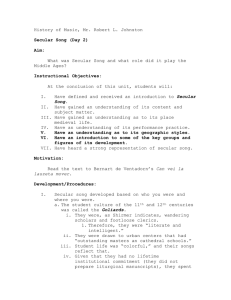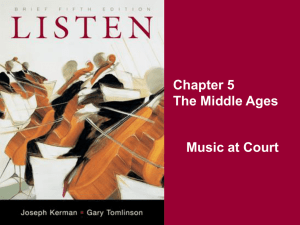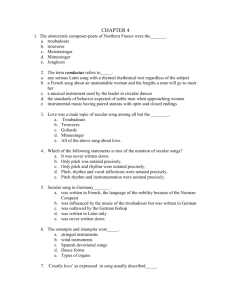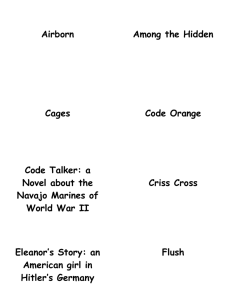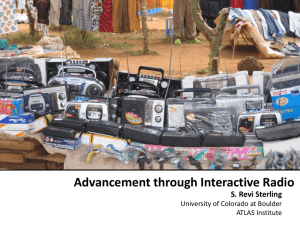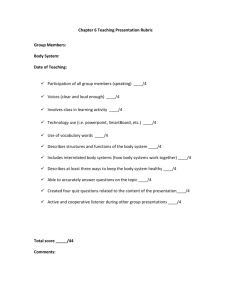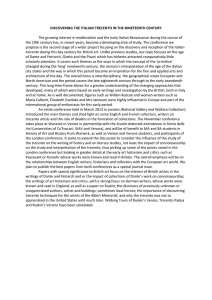get Assignment File
advertisement
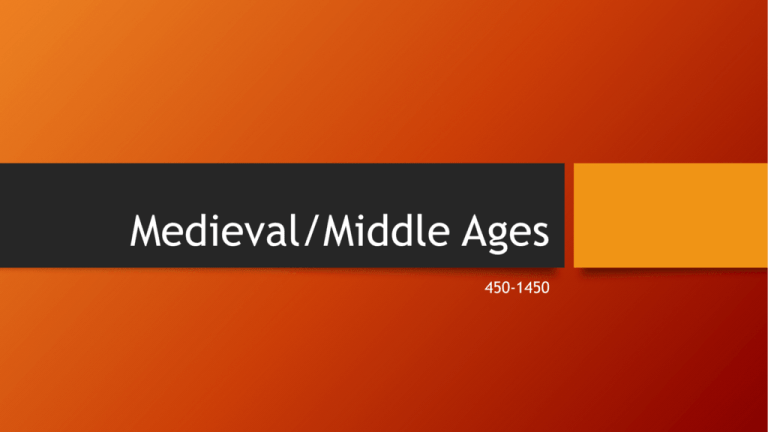
Medieval/Middle Ages 450-1450 Fall of the Roman Empire • • • • • Death (Short Life Span) War Illiteracy No entertainment Living in fear Historical Events • Construction of Notre Dame begins: c. 1096 • Mechanical clocks introduced: 1163 • St. Francis founds the Franciscan order: 1209 • Magna Carta: 1215 • Dante’s Divine Comedy written: 1307 • Hundred Years’ War between France and England: 1327-1453 • The Black Death: 1347-50 • Chaucer’s Canterbury Tales written: 1386 Gregorian Chant 4 lines staff No time signature Trying to control chaos/music unifies In Latin 900-1000: People wrote in prayer books to remind starting of the music • Monophonic texture • Scared Non-Lithurgical Drama • “Deum verum” • • • • • Notre-Dame de Paris • People experimenting with decorating chants • Notre-Dame School- Leonin and Perotin create organum (1100) • Rhythm notation (compound) • New musical forms • Addition of voices Organum • Two or more voices singing different notes • Could be florid: long held note against a more decorated moving part above • Could be a descant: both voices moving at the same time • Perfect intervals: consonant Guidonian Hand Guido of Arezzo created it around 1000 Used to teach music Helped memorize chants Began the idea of solmization based upon the syllables ut re mi fa sol la (known as hexachord) • Monks learned the pattern of singing chants using solmization • • • • Hildegard of Bingen (1098-1179) Abbess: in charge of woman’s monastery Early physician Wrote practical/philosophy Musician: morality play (sacred nonliturgical) • “Ave generosa” • • • • Motet (c. 1250) • From the word “mots” (French for “words”) • Could be sacred or secular • Polyphonic • Upper voices: could have vernacular texts • Tenor (Lower voice): could be played on an instrument • Upper voices: could have different but related texts • Could use two different languages Troubadours and Trouveres • Troubadours: South of France • Language: Occitan • Trouveres: North of France • Language: Old French • Poet-composers • Either aristocrats (dukes, princes, etc.) or highly regarded servants of aristocrats Music by Troubadours and Trouveres • • • • • Secular: not used for spiritual purposes Monophonic texture music but can be accompanied by an instrument Written in the vernacular: common language Preserved in manuscript collections called chansonniers Dealt with courtly love Bernart de Ventadorn (c. 1130?-c. 1200) One of the most famous troubadours Son of a baker First patron: Viscount Eble of Ventadorn Bernart had to flee Ventadorn after falling in love with Marguerite, Eble’s wife • Eventually, became poet in the employ of Eleanor of Aquitaine; followed her to England when Eleanor became wife of Henry II • Bernart in love with Eleanor?? • “Can vei la lauzeta” • • • • Eleanor of Aquitaine (1122-1204) • Wife of King Louis VII of France • Had two daughters with him • Marriage was eventually annulled • Remarried: Henry of England • Had several children, including King Richard I and King John of England Ars Nova (1310s-1370s) • Meaning New art or new technique • Initiated by Philippe de Vitry (1291-1361) • Rhythm Notation innovations • Duple division of note values • Subdivision of note values • Beginning of time signature • Style • Isorhythms: repeating patterns in the tenor • Musica Fieta (False): accidentals outside of the “Guidonian” hand • Musica Recta (Correct): allowed only notes in the “Guidonian” hand Guillaume Machaut (1300-1377) • • • • • • • • • • Poet/Musician Leading composer of Ars Nova Born in NE France to a middle-class family Cleric: took “Holy Orders” Poems: love Secular songs Sacred music Cycle mass Motets Wrote “La Messe de Nostre Dame” (“Mass of Our Lady”): Ordinary setting Ars Subtilior (End of 14th Century) • Meaning “Subtle” or “Refined” art • Flourished in the South of France and Italy • Music • Used complex rhythmic notation • Use of “coloration” (red notes) to show changes in the subdivision of the beat • Indepence of the parts Italian Trecento Music (1300s-1420) • Music in Italy in the 14th century • Trecento meaning “Three Hundred” • Secular and Scared Music Francesco Landini (c.1325-1397) • Leading composer of the Italian Trecento • Blinded by smallpox as a child • Focused on music from the point onwards • Mastered many instruments • Esteemed performer, composer, poet • Especially regarded for his skill on the “orgenetto” (small organ) • Involved in organ building • “Ecco la primavera” String Instruments Top (left to right): Harp, Rebec, Citole Bottom (left to right): Organistrum, Vielle (Fiddle), Lute Prototype Keyboard/Hybrid String Instruments Organ: Positive Psaltery Organ: Portative Prototype Woodwind Instruments Recorder Pipe & Tabor Transverse Flute Shawm Prototype Brass Instruments Trumpet Oliphant Charter Horn Percussion Instruments Timbrel Cymbals Triangle Feudal System • Send Handout! Fashion! • http://www.historyonthenet.com/medieval_life/clothing.htm
